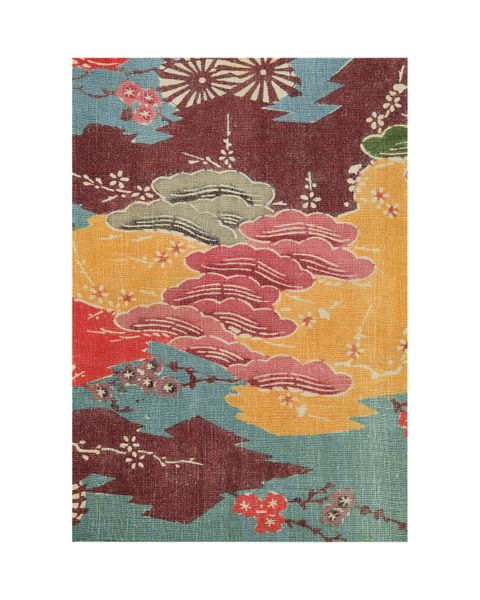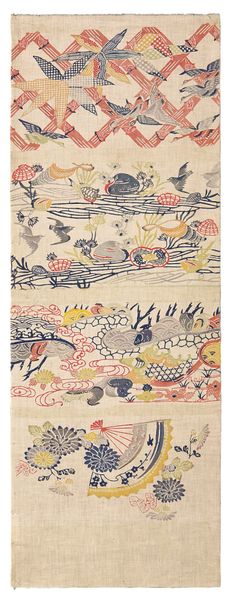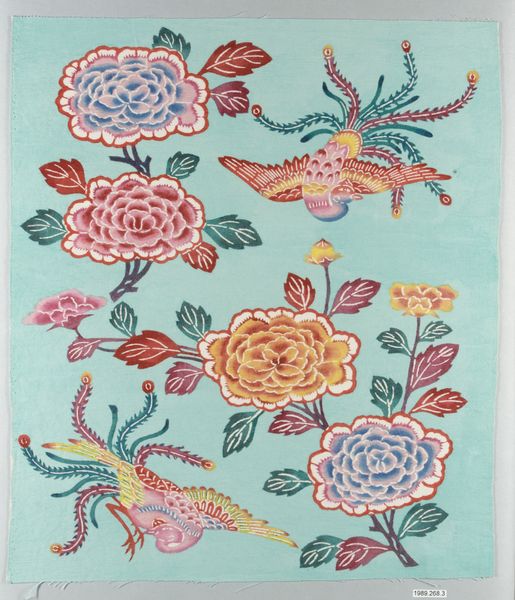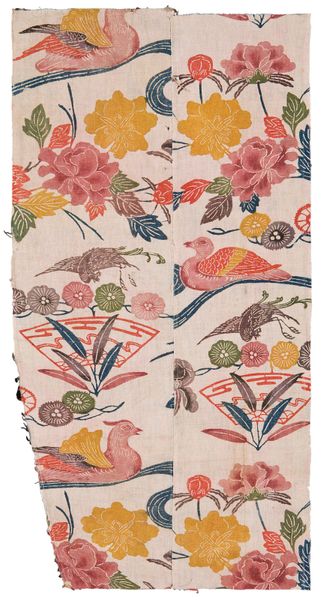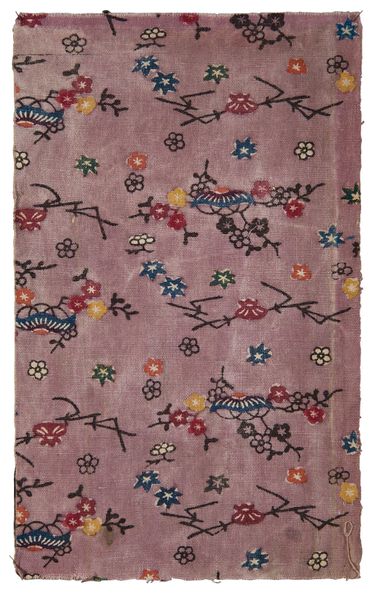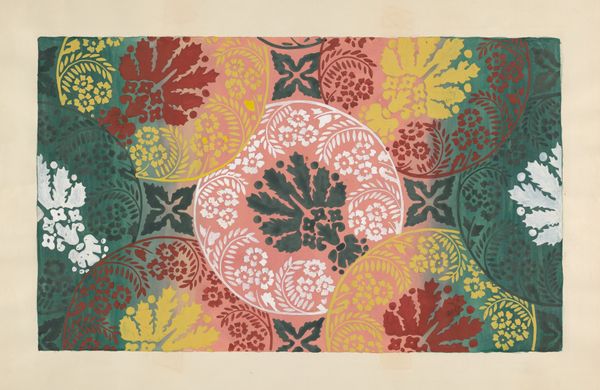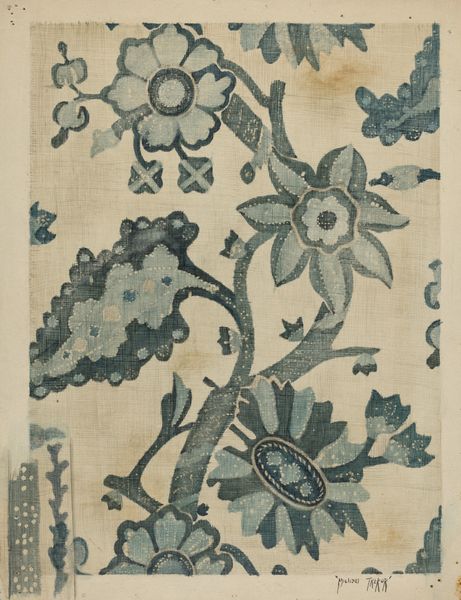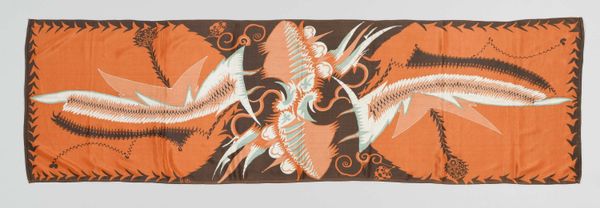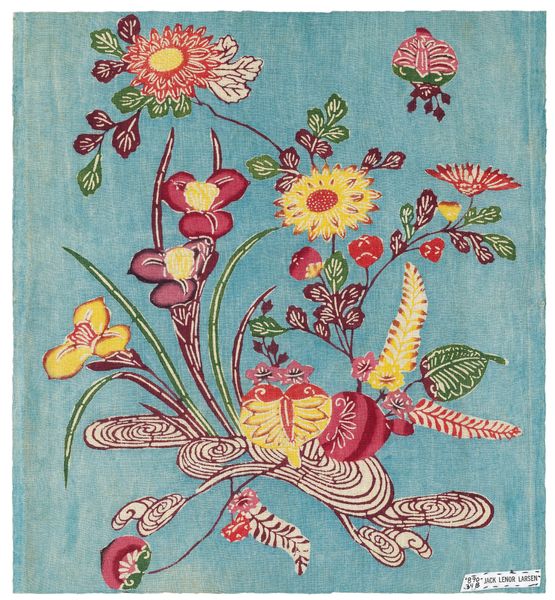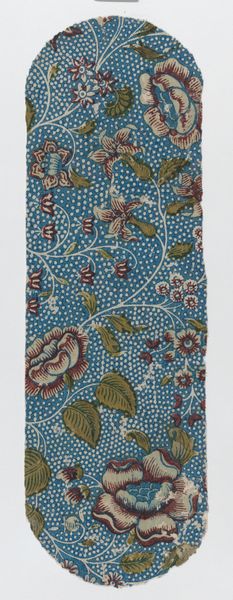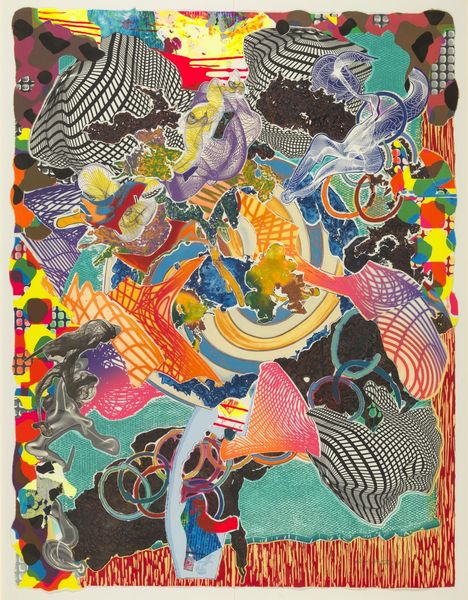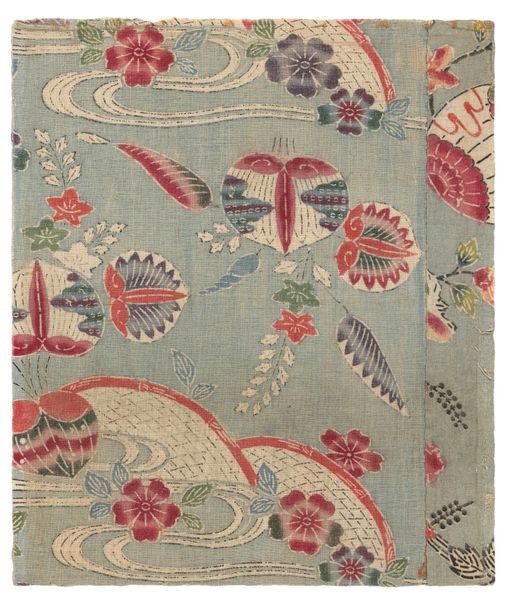
Fragment decorated with clouds and cranes c. mid 19th century
0:00
0:00
textile
#
naturalistic pattern
#
organic
#
asian-art
#
textile
#
geometric pattern
#
abstract pattern
#
organic pattern
#
flower pattern
#
repetition of pattern
#
vertical pattern
#
pattern repetition
#
layered pattern
#
combined pattern
Dimensions: 55 3/4 × 15 3/4 in. (141.61 × 40.01 cm) (overall)
Copyright: Public Domain
Editor: Here we have an eye-catching textile, entitled "Fragment decorated with clouds and cranes," likely dating to the mid-19th century. I understand it’s part of the Minneapolis Institute of Art’s collection. I’m immediately struck by how playful and vibrant it feels; the mix of colors is quite cheerful. How do you approach a piece like this? Curator: Ah, it’s like stepping into a dream, isn't it? The rhythm of colors reminds me of jazz—unexpected, delightful collisions. To me, it’s a peek into the artistic mind of the time. It suggests that beauty could be found even in the most fragmented parts of life. Don’t you think the anonymous creator is offering us a serene dance of symbols—cranes representing longevity, clouds suggesting dreams, and plum blossoms pointing to resilience? How does it sit with you when you view it through the lens of repetition and pattern? Editor: I didn't immediately connect the crane and cloud images to their deeper symbolic values. Considering repetition and pattern in design, this seems very deliberate rather than arbitrary, suggesting deeper spiritual themes or values about prosperity and happiness. Curator: Precisely. And think of the sheer dedication it took to create this textile. Imagine the stories it could tell, the lives it touched! You get a sense that this object was not just about the surface beauty. What part of its pattern stands out for you? Editor: Maybe the way the images repeat, but are never exactly the same, feels like life. The combination of patterns suggests harmony is possible. Curator: A lovely thought. I've now noticed that it encourages us to see beauty in both the grand design and its intimate components.
Comments
No comments
Be the first to comment and join the conversation on the ultimate creative platform.

